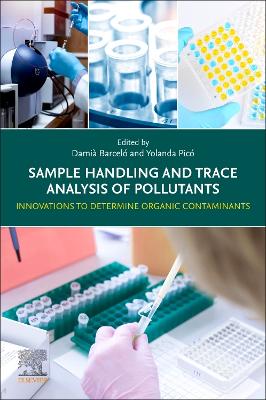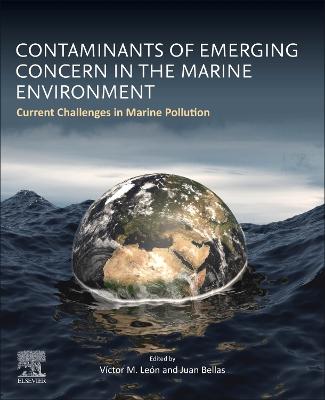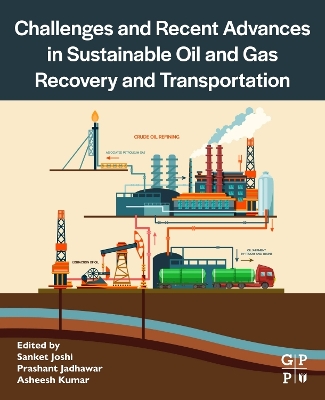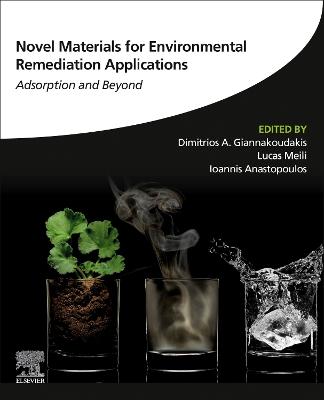Emerging Contaminants in the Environment
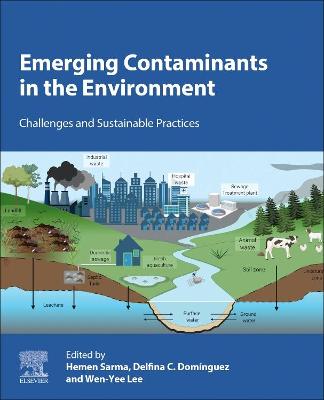 -10%
portes grátis
-10%
portes grátis
Emerging Contaminants in the Environment
Challenges and Sustainable Practices
Sarma, Hemen; Dominguez, Delfina C.; Lee, Wen-Yee
Elsevier - Health Sciences Division
01/2022
712
Mole
Inglês
9780323851602
15 a 20 dias
1470
2. Emerging environmental contaminants-current status,challenges, and technological solutions
3. Anticancer drugs in the environment: environmental levels and technological challenges
4. Exposure to 1,4-dioxane and disinfection by-products due to the reuse of wastewater
5. Transport, fate, and bioavailability of emerging pollutants in soil, sediment, and wastewater treatment plants: potential environmental impacts
6. Pharmaceutical and personal care products in the environment: occurrence and impact on the functioning of the ecosystem
7. Excessive pharmaceutical and personal care products in the environment cause life-threatening diseases
8. A broad perspective on antimicrobial resistance in coastal waters
9. Environmental fate and transportation of perfluorinated compounds
10. Engineered nanomaterials: threats, releases, and concentrations in the environment
11. Plastic pollution in marine and freshwater environments: abundance, sources, and mitigation
12. Electronic waste: an emerging contaminant in the geo- environment
13. Effects of pesticides on human physiology, genetics,and evolution
14. Integrative behavioral and ecotoxicological effects of nanoparticles
15. Determination of multiclass emerging contaminants using QuEChERS method
16. Removal of quinolone antibiotics from wastewaters and sewage sludge
17. Chemosensing technology for rapid detection of emerging contaminants
18. Methods of bisphenol A detection by gas chromatography and mass spectrometry (GC-Ms) in human breast milk and foodstuff
19. Microalgae as whole-cell biosensors in the prospective assessment of toxic effects of emerging contaminants
20. The mixture of agricultural pesticides and their impact on populations: bioremediation strategies
21. Assisted and amended technology for the sustainableremediation of emerging contaminants
22. Bioremediation of cytostatic pharmaceutical and personal care products and emerging technologies
23. Removal of antimicrobial resistance determinants from wastewater: a risk perspective on conventional and emerging technologies
24. Novel nanomaterials for nanobioremediation of polyaromatic hydrocarbons
2. Emerging environmental contaminants-current status,challenges, and technological solutions
3. Anticancer drugs in the environment: environmental levels and technological challenges
4. Exposure to 1,4-dioxane and disinfection by-products due to the reuse of wastewater
5. Transport, fate, and bioavailability of emerging pollutants in soil, sediment, and wastewater treatment plants: potential environmental impacts
6. Pharmaceutical and personal care products in the environment: occurrence and impact on the functioning of the ecosystem
7. Excessive pharmaceutical and personal care products in the environment cause life-threatening diseases
8. A broad perspective on antimicrobial resistance in coastal waters
9. Environmental fate and transportation of perfluorinated compounds
10. Engineered nanomaterials: threats, releases, and concentrations in the environment
11. Plastic pollution in marine and freshwater environments: abundance, sources, and mitigation
12. Electronic waste: an emerging contaminant in the geo- environment
13. Effects of pesticides on human physiology, genetics,and evolution
14. Integrative behavioral and ecotoxicological effects of nanoparticles
15. Determination of multiclass emerging contaminants using QuEChERS method
16. Removal of quinolone antibiotics from wastewaters and sewage sludge
17. Chemosensing technology for rapid detection of emerging contaminants
18. Methods of bisphenol A detection by gas chromatography and mass spectrometry (GC-Ms) in human breast milk and foodstuff
19. Microalgae as whole-cell biosensors in the prospective assessment of toxic effects of emerging contaminants
20. The mixture of agricultural pesticides and their impact on populations: bioremediation strategies
21. Assisted and amended technology for the sustainableremediation of emerging contaminants
22. Bioremediation of cytostatic pharmaceutical and personal care products and emerging technologies
23. Removal of antimicrobial resistance determinants from wastewater: a risk perspective on conventional and emerging technologies
24. Novel nanomaterials for nanobioremediation of polyaromatic hydrocarbons



